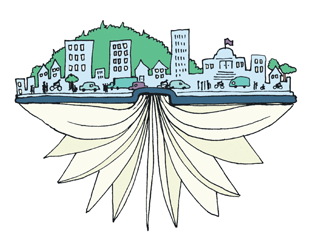The Radical Access Model of Disability
This article is written by members of Accessibilize Montreal and outlines the basis for their work and for the Radical Accessibility Audit (RAAP) project (described below).
What is the Radical Access Model of Disability?
This approach to disability means acknowledging systemic barriers that exclude people with certain kinds of minds or bodies, and working to ensure not only the presence of those who have been left out, but also their comfort, participation and leadership (A.J. Withers, 2012: 118).
Radical accessibility engages with critical disability, anti-racist and intersectional feminist theory to address issues of accessibility as linked with power imbalances based on race, class, sexuality, and gender.
The radical disability model views disability beyond barriers faced by people with differing physical mobility – “impairments” that are typically considered “overcome” with the installation of ramps, lifts and automatic doors. While we believe access should address mobility limits, it should also consider the needs of the blind or vision-limited, the deaf or hard of hearing, people with chemical sensitivities whose access depends on scent-reduced or scent-free spaces, barriers for folks with cognitive or intellectual disabilities, financial accessibility, and barriers faced by trans people, among others.
This model has shaped the criteria for Accessibilize Montreal‘s accessibility audits, prompting us to include lighting and visibility (for people whose communication depends on lip-reading and signing), whether bathrooms are gender-neutral, multiple mediums of signage displayed (relevant to people who are blind or vision-limited, deaf or hard of hearing, and those with cognitive disabilities). We are also interested in more standard measures of access like automatic doors and the presence of ramps!
The Radical Accessibility Audit (RAAP) Montreal
RAAP Montreal is a collaboration between Accessibilize Montreal and CURE.
It is an initiative to document, through audits, the accessibility of urban spaces in the hope of “collectively creating useful, accurate, broad-based and up-to-date accessibility information about the physical environment so we can make informed choices about what events and spaces we participate in and support” (RAMP, 2013).

